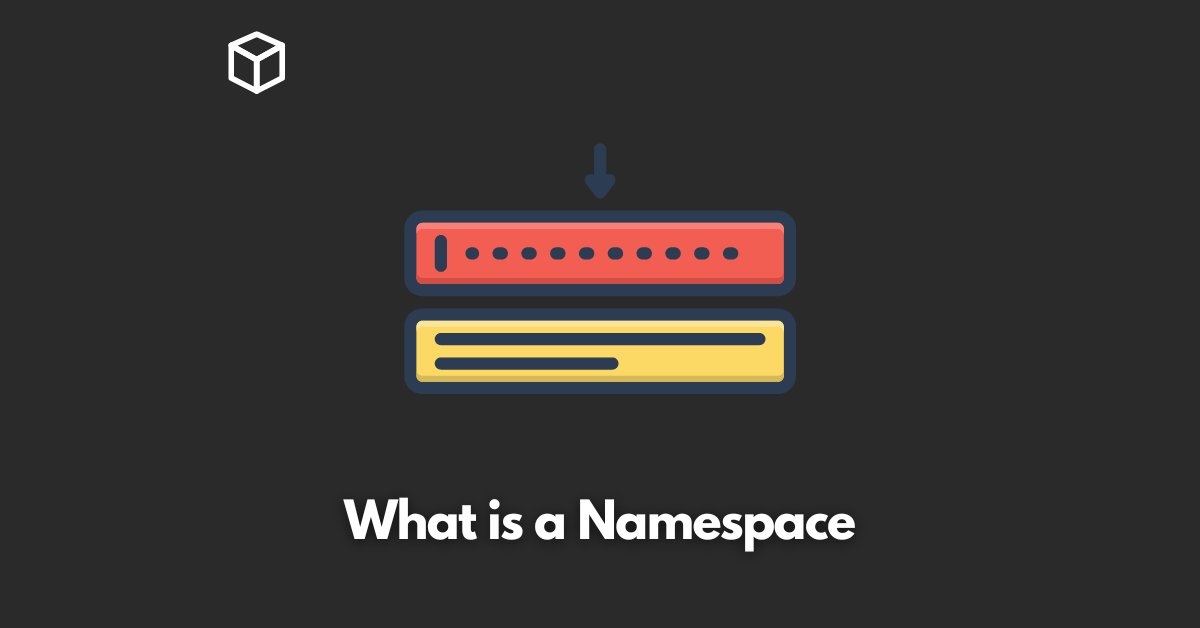When it comes to programming, organization is key.
One of the most important tools for keeping your code organized is the use of namespaces.
But what exactly are namespaces and why are they so important?
A namespace is a container that holds a set of identifiers.
In programming, it is used to organize code and prevent naming conflicts between different modules or libraries.
Essentially, a namespace allows you to group together a set of related variables, functions, and classes so that they are easily distinguishable from other groups of identifiers.
The importance of namespaces in programming cannot be overstated.
As your codebase grows, it becomes increasingly important to have a system in place for keeping track of all the different identifiers you are using.
Without namespaces, you would be forced to rely on naming conventions alone to distinguish between different sets of identifiers.
This can lead to naming conflicts, which can cause bugs and make your code more difficult to read and understand.
In this article, we will explore the concept of namespaces and how they can help you write cleaner, more readable code.
How Namespaces Work
The basic idea behind namespaces is simple: they allow you to group together a set of related identifiers so that they are easily distinguishable from other groups of identifiers.
For example, you might create a namespace called “MyLibrary” to hold all the variables, functions, and classes that you have written for a particular library.
Then, when you go to use one of those identifiers in your code, you simply prefix it with the name of the namespace.
Here’s an example of how namespaces can be used to prevent naming conflicts:
// Without namespaces int x; // With namespaces MyLibrary::x;
In the example above, “MyLibrary::x” tells the compiler that the variable “x” is located within the “MyLibrary” namespace.
This ensures that there is no naming conflict with any other variable called “x” that may exist outside of the “MyLibrary” namespace.
Types of Namespaces
There are several different types of namespaces that you may encounter in your programming:
- Global Namespace: This is the top-level namespace that contains all the identifiers that are defined in your code.
- Local Namespace: These are namespaces that are defined within a function or class. They are used to group together identifiers that are only used within that function or class.
- Built-in Namespace: These are namespaces that are defined by the programming language itself, such as the “std” namespace in C++.
- Namespaces in different programming languages: Namespaces are implemented differently in different languages, such as in Java it is called Package.
Namespace Resolution
When the interpreter or compiler encounters an identifier that is prefixed with a namespace, it must determine which namespace the identifier belongs to.
This process is called namespace resolution. In most cases, the compiler will simply look for the identifier in the current namespace and then, if it is not found, it will look in the parent namespace, and so on, until it reaches the global namespace.
For example, consider the following code:
namespace MyLibrary {
int x;
}
int main() {
MyLibrary::x = 5;
}
In this case, the compiler will first look for the identifier “x” in the “main” namespace. Since it is not found there, it will then look in the parent namespace, which is the global namespace.
Still not finding “x” there, it will then look in the “MyLibrary” namespace and find the “x” defined there.
It’s also important to note that the scope of a variable also affects namespace resolution.
For example, if a variable with the same name is defined within a local scope, it will take precedence over a variable with the same name that is defined in a global scope.
Conclusion
In conclusion, namespaces are a powerful tool for keeping your code organized and preventing naming conflicts.
By grouping together related identifiers and using namespace resolution to determine which namespace an identifier belongs to, you can make your code more readable and maintainable.
As the size of your codebase grows, it becomes increasingly important to implement a system of organization like namespaces.
It not only prevents bugs caused by naming conflicts but also makes it easier for other developers to understand and work with your code.




